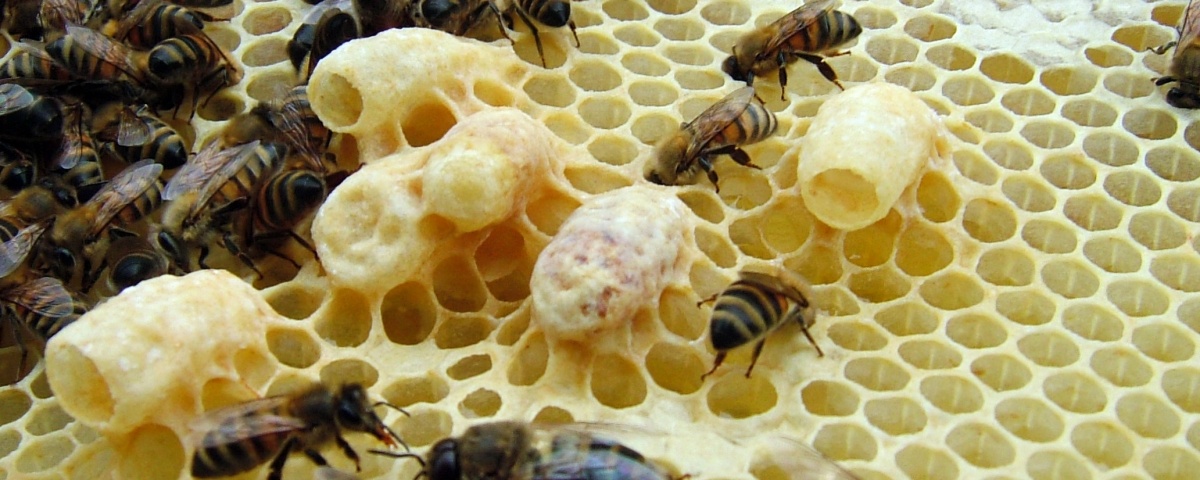- All-In-One Beekeeping for the Bees
- +1-608-728-8233
- info@beepods.com
Queen Cells: The 3 types and what they can tell you about your hive.

We sat down with our head of beekeeping operations to ask some questions about the queen cells she’s been finding in our hives. During summer time, queen cells become something every beekeeper should be familiar with, especially if their colony (ies) seem to be going gang busters. So we wanted to boil down our conversation to 3 main points.

A teacup on the bottom edge of a bar of comb.
Swarm Cells mean your colony is healthy
Queen cells can first be identified by a special cell that is produced in the hive that looks like a “teacup.” A teacup without an egg or larva is not yet considered a queen cell, but it is definitely something to keep an eye on during the season. The difference between where it is located in the hive helps to identify the potential outcomes after it becomes a queen cell. If the teacup is to become a swarm cell, it will be placed vertically on the outside edge of the comb in a top bar hive.
A swarm cell takes place when the colony knows that there is an abundance and the colony is healthy enough to reproduce. The old queen will leave with part of the hive and find a new home, while the remaining bees await their new queen.

Queen swarm cells on edge of comb with larvae and royal jelly inside.
The other types of Queen Cells mean there could be trouble.
Supercedure cells and emergency cells appear for different reasons. The supercedure cell is created because the queen is not doing her job. The worker bees know how the hive needs to work and when the queen isn’t laying eggs, for example, they remove her from her position. This cell is placed vertically in the middle of the comb, not on the edge like swarm cells, in an effort to hide it from the queen the bees wish to replace.
The emergency cell is created when a catastrophic event has happened to the queen. In this case, the workers will create a queen cell out of a normal brood cell. This results in a cell that is located half in a brood cell and half draped over the edge.
Keep watch for both of these cells as it could mean some challenges are ahead for your colony.

Supersedure cups seen on the middle of the comb. The queen is going to be replaced!
Bees know what to do, just be prepared to support them.
The job of the beekeeper is to support the normal activities of the hive and be sure that the bees don’t deal with too many stressful situations. Just like stress affects human being negatively, the same goes for bees.
Keep in mind that bees almost always make multiple queen cells, no matter the type. Don’t be alarmed if you see several clustered together, or over 10 in a single hive. The bees do this as a kind of insurance policy, to ensure the survival of their family.

A capped emergency queen cell.
Long story short, swarms are something that all beekeepers practicing beekeeping for the bees should be aware of and learn more about. Stay tuned as the Beepods Team shares more information like this.
The transcript from the conversation with Laura can be read here.
Brad James
Latest posts by Brad James (see all)
- Where does pollinator week come from? A brief History of Pollinator Week and its impact on supporting pollinators - June 17, 2019
- Honey Bee Breeds and Their Attributes - March 2, 2018
- My 3-Year-Old Daughter Loves Bees - December 5, 2017



